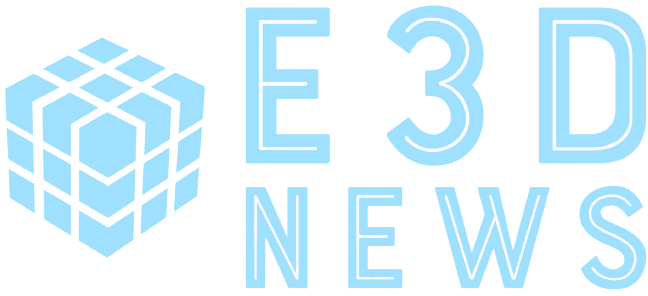Social Emotional Learning has become one of the “hot buzzwords” in education and EdTech, but at its core, it has been around for a very long time. 2,000 years ago Plato wrote “All learning has an emotional base,” and it has long been recognized that learning only occurs when the students believe they have the ability to learn. We have all met people who “don’t do math” or think they are terrible writers. Once negative attitudes take hold in a student’s mind, it is very difficult to dislodge. This is exactly what Carol Dweck has spent her life studying and what her book Mindset is all about
Social Emotional Learning in its modern form was developed to confront negative attitudes in the classroom. CASEL, the Collaborative to Advance Social and Emotional Learning, was created in 1994 and schools have been implementing SEL programs ever since. LA Unified’s program has been in place for 25 years.
CASEL breaks down SEL into 5 core competencies
- Self-Awareness
- Self-Management
- Responsible Decision Making
- Social Awareness
- Relationship Skills
But recently SEL has become another triggering concept on the Right along with Critical Race Theory. This new battleground has resulted in school board complaints against SEL in at least 25 states in the last 2 years.
SEL has a proven track record. There are numerous studies showing SEL is vital for success in the classroom for many students. Here are three ways SEL can help students.
1. SEL can improve student attitudes
A study in 2021 from the Early Intervention Foundation.found that universal SEL interventions enhance young people’s social and emotional skills and reduce symptoms of depression and anxiety in the short term.
A 2011 analysis of more than 200 social and emotional learning programs found that such programs improve students’ attitudes and behaviors. The study, conducted by researchers at Loyola University Chicago and the University of Illinois at Chicago, involved more than 270,000 K-12 students and examined the impact of programs that aimed to promote students’ ability to recognise and manage emotions, establish and maintain positive relationships, set and achieve positive goals, make responsible decisions, and constructively handle interpersonal situations.
The researchers found that, compared to students outside these programs, students in the programs showed significantly improved social and emotional skills, caring attitudes, and positive social behaviors. Students’ disruptive behavior and emotional distress declined as well.
2. SEL can improve Educational outcomes and grades
SEL can boost academic performance as well. In a group of studies that examined academics, the researchers found that students performed better on achievement tests, tantamount to an 11-percentile-point gain in achievement. This study was conducted at Loyola University in Chicago by Professor Joseph A. Durlak in 2011. Since the publication of that first study, three additional meta-analyses have been conducted (Sklad et al., 2012; Taylor et al., 2017; Wiglesworth et al., 2016). It found that:
- Compared to control students, students participating in SEL programs showed significantly more positive outcomes with respect to enhanced SEL skills, attitudes, positive social behavior, and academic performance, and significantly lower levels of conduct problems and emotional distress.
- The higher academic performance of SEL program participants translated into an 11 percentile-point gain in achievement, suggesting that SEL programs tend to bolster, rather than detract from, students’ academic success.
Programs were effective for students of all ages and from different ethnic groups, regardless of whether their institutions were in urban, suburban, or rural areas.
3. SEL helps to prevent Bullying
A 2015 study has found that SEL programs reduced bullying perpetration by 20 percent over a three-year period. More than 120 students with disabilities at two districts in the Midwest participated in the research.
The study, led by Dorothy L. Espelage of the University of Illinois, examined SEL intervention during a total of 41 lessons, which addressed bullying, emotional regulation, empathy, and communication skills. Forty-seven children received the curricula, and 76 peers were in the control group.
At the beginning of the study, students were surveyed on their involvement in verbal and relational bullying, victimization by peers, and fighting. Students were re-assessed during each of the three subsequent spring terms. Self-reported bullying perpetration significantly decreased over the course of the study among students with disabilities who received the Second Step lessons.
SEL is not revolutionary, and as we saw with Plato’s quote, we are not just discovering the importance of it now. But we are being reminded of its value, its utility, and its importance. Implementing an SEL training program for all schools is a keystone of being a good educational institution in the modern day.
More Stories
Justin Reich on Learning Loss, Subtraction in Action, and a future with much more disrupted schooling
Justin Reich is an education and technology researcher and the director of MIT’s Teaching Systems Lab. He hosts a podcast...
Public K-12 Enrollment is falling and that is dangerous and exciting
A surprising result of COVID and the resulting school closures is that many parents, after struggling to figure out how...
Esports could help re-diversify a shrunken curriculum
Esports and schools feel like a pretty strange fit. Regular sports have always gone with schools, but adding esports still...
People aren’t flipping out for flipped classrooms like they used to
Flipped learning, a new strategy for teaching that flips the traditional idea of classroom lecture followed by homework on its...
Review of “How to Raise Successful People” by Esther Wojcicki
This is an interesting book with the perspective of a unique person that ultimately falters because of the blind spots...
the Importance of Preschool Play
Early childhood education is on the rise in a big way, with the small stumbling block of ECE teacher pay....
